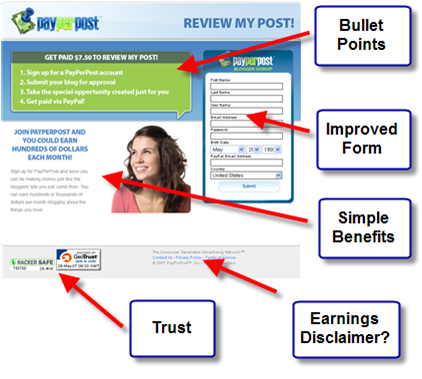So, what is a landing page, and why are they important?
For me, there is only one main and essential role a website plays: conversion. It doesn’t matter if you sell goods, services, an idea or philosophy, a cause, or anything else you care to think about; websites are all about getting your visitors to do something. I.e., buy your goods or services, adopt your philosophy, or rally behind your cause.
So in a nutshell, landing pages are there to convert your visitor into something more (usually a customer). It does this by introducing a Call To Action such as filling out a form or picking up the phone and calling you. Landing pages are often the most effective method for conversion.
Landing pages are extremely relevant when it comes to Pay Per Click (PPC) advertising but there are many more applications where landing pages will play an important role in your web strategy.
“Click Through” vs. “Lead Generation”?
There are 2 basic types of landing pages both with distinct functions and outcomes.
Click-through landing pages are designed to take your visitor to another page. This is often the case in eCommerce sites where a visitor searching for “green widgets” finds a brief description of their search results and is then simply invited to click on a buy button which may take the visitor to a checkout where the conversion from visitor to client takes place.
Lead generation landing pages are, as their name suggests, designed to generate leads for future follow-up. Generally, this is achieved by adding a small form to the page that captures the name and contact details of your visitor. If the visitor fills in the form and clicks the “Send” button, they are converted from being a visitor to being a lead.

Landing page tips
- Keep your landing page extremely simple.
- Use bullet points rather than long narratives.
- Keep your landing page relevant to the visitor’s search query. So if they searched for “blue widgets”, talk about blue widgets. More importantly, don’t talk about “red widgets”!
- Your landing page is not just a page on your site. It performs a very specific function and can therefore be very different compared to the rest of your site.
- Use simple marketing principles. Do not just describe the product or idea but also briefly list some main features and the benefits these features bring to the visitor.
- Use one (1) powerful image that sums up your product or idea.
- Make use of short (2 minutes max) videos in place of a static graphic.
- Win the visitor’s trust by ensuring them that the website is legitimate. You can use an SSL Certificate to achieve this or some brief testimonials.
- Cut out any distractions or roadblocks by only offering one (1) Call To Action. One button to click which means no menu, no adverts, no policy links, no nothing; just the CTA…
- Have a simple small form. Do not ask for any more than you need in order to initiate contact. DOB, sex, and address are all irrelevant at this stage or even off-putting. Ask enough to get (and keep) in contact. Collect a name, phone number, and email. All the details will come later…
- Sweeten the deal. Consider giving something away such as a free download as a reward for acting upon the Call to Action. For example, “Register and receive a Free eBook; How to build a landing page” or a free trial of some sort; whatever…
- Create a sense of urgency. For example, “This Month Only” or “Only available for the first 100 customers”…
If all else fails, come and have a talk with us and we will develop an effective landing page strategy for you…

